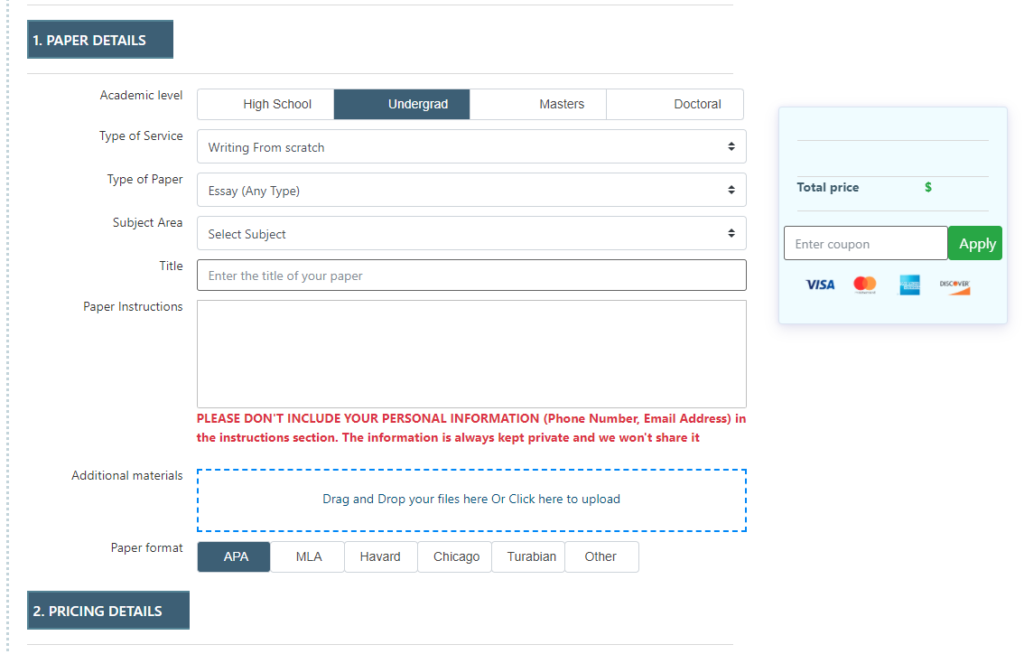Writing a Top 10 List Feature
Choosing a Topic
1. Brainstorm naturally. Don’t sit down one day and say, Ok, I want to write a Top 10 list. What should I write it about? The best ideas are ones that come to you naturally, not ones that are forced out of your poor brain. If it’s an interesting idea, it will likely spring forth from an unrelated activity, like actually playing a game or reading other lists.
One of the activities that most often leads to new list ideas as well is actually writing a list. If you’ve already got an idea in mind that you’re working on, be ready to write down new ideas as well. A lot of them won’t go anywhere, but when you’re in the writing mindset, you’re naturally well-equipped to think of new ideas as well.
2. Choose a suitably narrow topic. There are two extremes when it comes to brainstorming a topic: there are lists for which hundreds of things would technically qualify for consideration and there are lists for which you’d struggle to even think of ten things. The best list topics are the ones that fall somewhere in the miIDle. You want a decent body of selections to choose from, and you want to have to at least defend your ideas a bit. At the same time, if the body to choose from is too large, your list becomes absolutely nothing but opinion.
3. The search bar is your friend. There’s nothing wrong with doing a topic that’s been done before. However, searching previously done lists can provide valuable information. If the topic’s been done a dozen times, maybe you’ll want to put your own spin on it. Or perhaps you want to do something special to differentiate your list from a recent one. Reading similar lists might also make you aware of things that you don’t like about other lists in that general theme, so that you can then ensure you do something differently.
4. Formalize your criteria. This is, in my opinion, the most important aspect of choosing a list topic. A good list has very formal criteria for inclusion and ranking. The benefit of formal criteria is that it makes your list less opinion-based: it gives you something standard and concrete against which you can weight the games’ merits. If someone comes along and disagrees with your list, the disagreement takes place in the context of your criteria: do they disagree in how you applied your criteria, or in your criteria themselves?
5. Ask yourself: Is this interesting? Why? A problem that can come up in writing lists is that people get bogged down in the nitty gritty of just sufficiently describing everything to get the list posted. That’s why many lists are boring: the writers themselves forget to make them interesting. If you don’t enjoy writing the list, chances are no one is going to enjoy reading the list.
So when you come up with your topic, ask yourself the question: would I want to read a list on this topic? If you wouldn’t, chances are no one else would either. But more importantly, once you decide an idea is interesting, ask yourself: why? Why would this idea make an interesting read? The reason to answer this question is because you want to write specifically to this motivation: if it’s interesting because it highlights funny moments, then make the list funny. If it’s interesting because it highlights a side of something people might not know, then make sure to include lots of trivia. The important thing is to identify why a list topic would be interesting, and then write to explicitly exploit that reason
6. Be independent in your topic selection. Reading through lots of Top 10 lists you’ll quickly notice that many of them tend to follow a specific formula. There’s a vaguely interesting and ill-defined idea.
Writing the List
15. Ideal length is 250 to 300 words. It’s not that this is meant to limit your ideas or anything, it’s just a practical consideration. People tend to avoid giant walls of text, and stop reading after a couple paragraphs per game. If you want them to read everything you have to say, try to keep it in this word range to keep your audience. That said, if you consciously choose to exceed this (as I often, often do), that’s fine: just understand the give-and-take that comes with it. Regardless, it’s better to write too much than too few.
16. Use proper grammar and spelling. Top 10 lists that are featured go on the front page of a site that gets millions of visitors a day. We don’t know how many hits a featured list gets necessarily, but suffice to say that it’s a lot. So, treat the medium with a little respect. Copy your text over to Word to spell-check it before submitting. Use proper grammar, and at least a slightly formal writing style: avoid internet slang and try to write in a normal style, without over-using ellipses or emoticons. This will not only help your list get posted in the first place, but it’ll help it have a more professional air to it.
16. Topic first, then items, then intro, then conclusion. This is more of a personal suggestion, and other writers might disagree, but there’s a certain order I recommend the actual text of a list. First, start with your topic, formalize the criteria, and select theitems. Then, write the descriptions for each of the 10 items (preferably in order, so you can refer backwards more easily). Then write the introduction and the conclusion. The reason for this is that ideally, your introduction sets the frame for your list and your conclusion summarizes it; it’s hard to know what you’re framing when you haven’t written the items yet. That said, it can also be easier to write the individual items in the context of some frame, so the other way has its benefits, too. Experiment on your own and see what works best for you.
17. No one likes a wall of text. Remember, you can now use line breaks, so make use of them to break up your paragraphs into readable, topical chunks. Italics and bold text are good so use those for emphasis instead of asterisks or capitalized words.
18. Have a formula. This helps both you and the reader. Ten 300-word write-ups can be intimidating, both to write and to read. It’s , it’s ambiguous, and it provides little help to what you should be writing. So do yourself a favour and break it up a bit. On every write-up you could, for example, spend a paragraph describing the item, a paragraph describing the aspect that fits your list, and a paragraph describing why it ranks where it does.
19. Be consistent. Whether you have a formula or not, try to stick to writing approximately the same amount about each item on your list.
20. Know your tone. If you’re writing a comedic list, don’t give it an analytical spin. If you’re writing a very serious, in-depth analysis, then provide the information you need to provide. Understanding the type of list you’re writing is very important; all lists have a place, but if you’re trying to describe the Top 10 Funniest Video Game characters, you might want to go with a funny list rather than analyzing the humor of those characters.
21. Avoid assumptions. The majority of people reading your list probably haven’t thought about what is on the list so avoid assumptions.
22. Look for feedback. Always be prepared to redesign your feature.
Some examples of Interesting Top 10 List features
http://www.bivingsreport.com/2007/top-10-best-newspaper-websites/
http://listverse.com/2008/03/21/top-10-blatant-examples-of-product-placement-in-movies/
http://www.focus.com/briefs/top-10-leadership-qualities/
WHAT IS A FEATURE?
A news story can be hard, chronicling as concisely as possible the who, what where, when, why and how of an event. Or it can be soft, standing back to examine the people, places and things that shape our world, nation or community.
There is no firm line between a news story and a feature story because so many news events are featurized.
Most newspapers offer a mix of hard news stories that chronicle the significant events that occurred since the last edition, and features that:
€¢ Profile people who made the news
€¢ Explain events that moved or shook the news
€¢ Analyse what is happening in the world, nation or community
€¢ Teach an audience how to do something
€¢ Suggest better ways to live in a complicated world
€¢ Examine trends in constantly changing societies
€¢ Entertain
Despite today’s interest in feature stories, hard news still fills most of a newspaper’s front page, the stories become softer. Even in television and radio news, after the anchors report the major news of the day they turn to features.
Readers want hard news that tells them the who, what, where, when, why and how of events that are occurring constantly in their world, nation and community. They also want to be entertained, to smile or cry, to learn and to sit back and truly enjoy a story.
Sometimes the distinction between hard and soft news is clear but sometimes a story could be written as a hard or a soft news item.
Types of Features
Feature is an umbrella term for a number of soft news stories that profile, humanise, aID colour, educate, entertain or illuminate. A feature is not meant to deliver the news firsthand. It usually recaps major news that was reported in a previous news cycle. It can stand alone, or it can be a sidebar to the main story, the mainbar.
A sidebar runs next to the main story or elsewhere in the same edition, providing an audience with aIDitional information on the same topic.
Types of features include:
€¢ Personality profiles
€¢ Human interest stories
€¢ Trend stories
€¢ In-depth stories
€¢ Backgrounders
Personality Profiles
€¢ Are written to bring an audience closer to a person in or out of the news. Interviews and observations, as well as creative writing, are used to pint a vivid picture of the person.
€¢ People enjoy reading about other people, which makes personality profiles very popular.
€¢ Multiple sources must be used with profiles €“ it is not just enough to interview the source. People around them will provide much insight.
Human Interest Stories
€¢ Are written to show a subject’s oIDity or its practical, emotional or entertainment value. Examples include how to repair a washing machine and how people are surviving in the city with the nation’s highest unemployment rate.
Trend Stories
€¢ A trend story examines people, things or organizations that are having an impact on society. Trend stories are popular because people are excited to read or hear about the latest fads. Examples include a look at summer fashions, a new religion or the language of teenagers.
In-Depth Stories
€¢ An in-depth story, through extensive research and interviews, provides a detailed account well beyond a basic news story or feature.
€¢ It can be a lengthy news feature that examines one topic extensively; an investigative story that reveals wrongdoing by a person, agency or institution; or a first-person article in which the writer relives a happy or painful experience.
€¢ Examples include stories on cancer and how it has affected several families or how illegal immigrants get into Australia.
Backgrounders
€¢ A backgrounder €“ or analysis piece €“ aIDs meaning to current issues in the news by explaining them further.
€¢ They bring the audience up-to-date, explaining how this country, this organization, this person or whatever got to be where it is now.
Writing and Organising Features
Feature writers seldom use the traditional inverted-pyramid form. Instead they may write a chronology that builds to a climax at the end, a narrative, a first-person article about one of their own experience or a combination of these.
Always:
1. Choose the theme €“ Make sure the theme is not too broad or too narrow.
2. Write a lead that invites an audience into the story €“ A summary may not be the best lead for a feature. A two, or three paragraph lead block that begins with one of the special leads may be better.
3. Write clear, concise sentences €“ Sprinkle direct quotations, observations and aIDitional background throughout the story. Paragraphs can be written chronologically or in order of importance.
4. Provide vital background information €“ If appropriate, a paragraph or two of background should be placed high in the story to bring an audience up to date.
5. Use a thread €“ Connect the beginning, body and ending of the story.
6. Use transition €“ Connect paragraphs with transitional words, paraphrases and direct quotations.
7. Use dialogue when possible €“ Feature writers, like fiction writers, often use dialogue to keep a story moving. Of course, feature writers cannot make up dialogue; they listen for it during the reporting process. Good dialogue is like a good observation in a story. It gives readers strong mental images and keeps them attached to the writing.
8. Use voice €“ write in a style that reveals personality.
9. End with a question or another part of the thread €“A feature can trail off like a news story or it can be concluded with a climax.
Creative and Feature Writing for the Media
Activities
Carefully read the news sections of the daily newspaper (including domestic news, foreign news, business news and sport sections). Try and find at least three feature ideas from those sections.
Now look at a weekend newspaper €“ the news feature sections, the review section and the magazine. How many features in those sections interest you? Why? Are there some that could have been more interesting? What would it have taken to make you read those features? What was it about the engaging features that kept you reading?
Do you have an idea for a feature? Where did the idea come from? How would you pitch it to an editor? (Think about what makes the story interesting and how you would illustrate it with pictures, graphics and a breakout box.)








